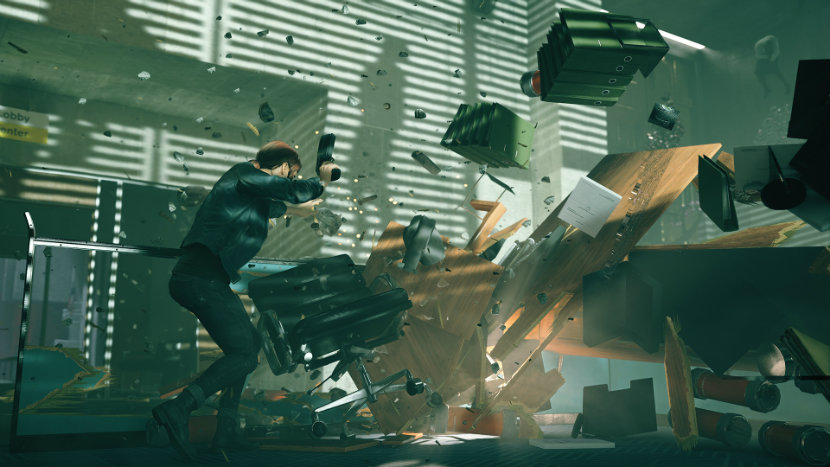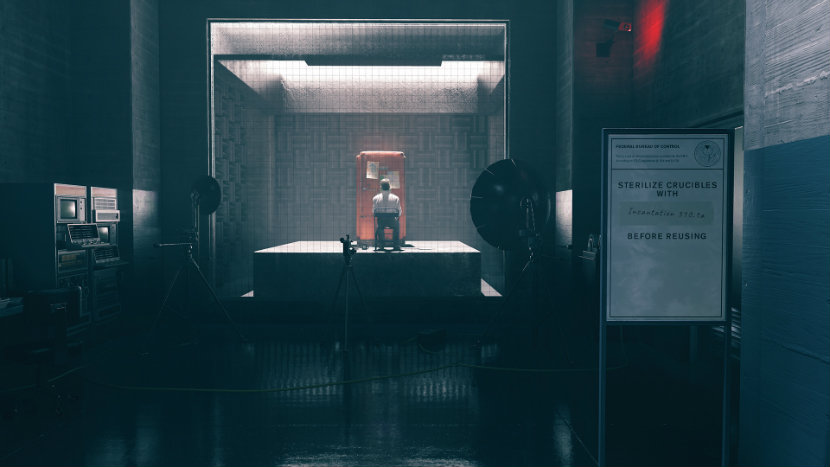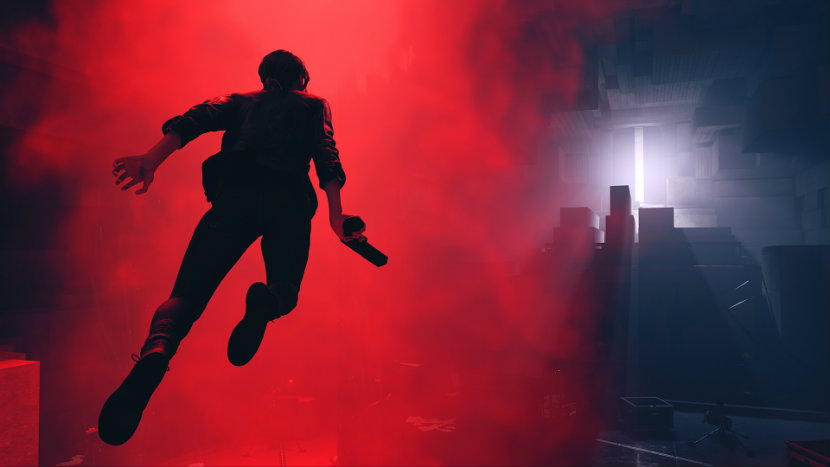After Quantum Break didn’t seem to do so hot as a Xbox One exclusive, development studio Remedy has returned to multiplatform with Control, another story-driven action game about paranormal phenomenon. Despite the pattern studio head Sam Lake seems to love following, he and his teams always find new ways to dress it up, and this time we’re looking at a sort of mashup, a blend of 60s-style government secrecy, interdimensional sci-fi, and uh, metroidvanias. While Control often gets in its own way with technical issues and weird map choices, it’s also a compelling romp through some creative lore that is thoroughly crafted, but doesn’t take itself too seriously.
Into the Frying Pan, Which is on Fire

Control puts you in charge of Jesse Faden, who has managed to infiltrate the Federal Bureau of Control in search of her missing brother, and answers to several questions. This secret government organization is in charge of reining in “paranatural” phenomenon, mostly revolving around mundane objects that somehow act as bridges between our reality, and others. These Objects of Power (OoP), as they are called here, can be anything from a rubber duck, to an entire house. In fact, the organization’s latest headquarters is the Oldest House, a building that is itself a gateway to multiverse shenanigans. Jesse enters the building just as a malicious supernatural force (later dubbed The Hiss) tears the place up, and she finds herself in charge of the place and responsible for everyone who’s still standing.
As Jesse makes her way around the Oldest House, she relies on two key tools: The Service Weapon, and a set of powers granted by a mysterious entity. The Service Weapon is another OoP, which takes the form of a shapeshifting gun the player can tweak and upgrade with various parts and crafting materials. Enemies, which are Bureau staff taken over by The Hiss, drop in at inopportune times and players will need to make the most of their chosen loadout to survive. Jesse’s powers include launching objects at dangerous velocities, levitation, and more. These powers are governed by a recharging meter, and Jesse is able to upgrade things like her health and energy capacity, with points earned from completing objectives.
Paralethal Activity

Using the Service Weapon and Jesse’s powers together is something Control practically forces you to do. There are no difficulty settings, and Jesse is pretty fragile on her own. The aim of combat is to keep moving and managing your meters, both the energy for powers as well as the Service Weapon’s replenishing ammo supply. Naturally, certain enemies will have unique properties and behaviors that demand specific counters, so being able to quickly analyze your surroundings while zipping around dodging gunfire and rockets is key. It’s a lot of fun, especially once Jesse’s tool kit gets nice and fleshed out. The constant momentum gives Control an almost DOOM-like feel, albeit a much slower, third-person, telekinetic DOOM. But between staying still being a death sentence, and enemies dropping little, glowing health pickups, it can seem a little familiar.
Unfortunately, like I mentioned earlier, Control gets in its own way. During the review period, Control had some pretty severe performance issues. The game would lag constantly when entering and exiting menus, and when enemy encounters got busy (or explosive) enough, the frame rate would plummet. This happened throughout the game, and even after a “day one” update was applied. Presumably many of these issues will be addressed down the line (as has already started to happen), but the day one build is in rough shape. That said, the dips in performance were never game-ruining, and while it could be frustrating to have things start chugging, those moments were never prolonged enough to get me killed or anything.
Aside from the performance jank, my second biggest problem with Control is navigating. See, this game is one hundred percent metroidvania inspired. It’s obvious from the get-go. Jesse gets various powers and items that allow her to progress through more areas in the Oldest House, and there’s plenty of backtracking, secret-discovering, and intermittent savepoints that allow you to fast travel between them. Control has metroidvania written all over it, and I don’t just mean in the PR materials (although it’s there too). But all good metroidvanias have good maps, and Control struggles here.
Travel Woes

First of all, the map screen is not only static, but it takes up the entire screen and doesn’t pause the game. So, while it’s cool that you can run around and look at the map simultaneously, you’re in a bad spot if you run into combat. Additionally, there’s no function to zoom in, and the maps are all quite large and detailed. There’s also nuance to the shading on the map, indicating vertical layers. As such, some of the details are hard to make out, and things like locked doors aren’t marked at all. While getting through the critical path isn’t exactly tough, some waypoint-chasing moments can be a little confusing and take more time than they should. These issues can be exacerbated by side missions, which sometimes have a hard time limit, or involve more searching than usual.
While Control is a fumbly piece of software, it’s a fumbly piece of software that tells an interesting story. Jesse Faden is kind of wooden for a video game protagonist, but her surroundings are fascinating. While in a literal sense that means wide open, stark white spaces that often bend the rules of reality, Control’s story also comes with a lot of fun, jargon-y government conspiracy stuff that’s paired with sci-fi action/adventure quite well. A lot of that is all the supplemental material, some of which pulls the same wacky live action gimmicks Remedy has been playing with since Alan Wake. But all the little memos you find scattered about, full of government style censorship blocks, are just as much fun to read and attempt to decipher. I don’t normally care to bother with in-game codex stuff, but in Control it’s a part of piecing everything together and learning the world’s rules, which combined with their diegetic presentation motivated me to keep looking at everything I found.
Control is another game from Remedy that does exactly what you’d expect from Remedy. It’s a little off-kilter, but thoughtful and meticulously written. It’s a little janky (sometimes a lot janky), but its mechanics amount to solid junk food when everything is functioning as intended. Control is definitely a step back into “AA” territory after the big ambitions that powered Quantum Break, but frankly this is exactly the sort of space Remedy excels in. While it can be rough at times, Control is like a paperback novel you pick up to kill some time, then unexpectedly find a lot of intrigue and charm.
Control review code provided by publisher. Version 1.02 reviewed on a Standard PS4. For more information on scoring please see our Review Policy.
-
Fun sci-fi story filled with compelling government secrecy-flavored lore
-
Challenging combat makes you use all your tools
-
Awesome reality-bending environment visuals
-
"Day one" build suffers from consistent performance issues
-
Cumbersome map makes navigation annoying sometimes
-
Main character is a bit boring








